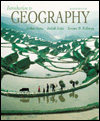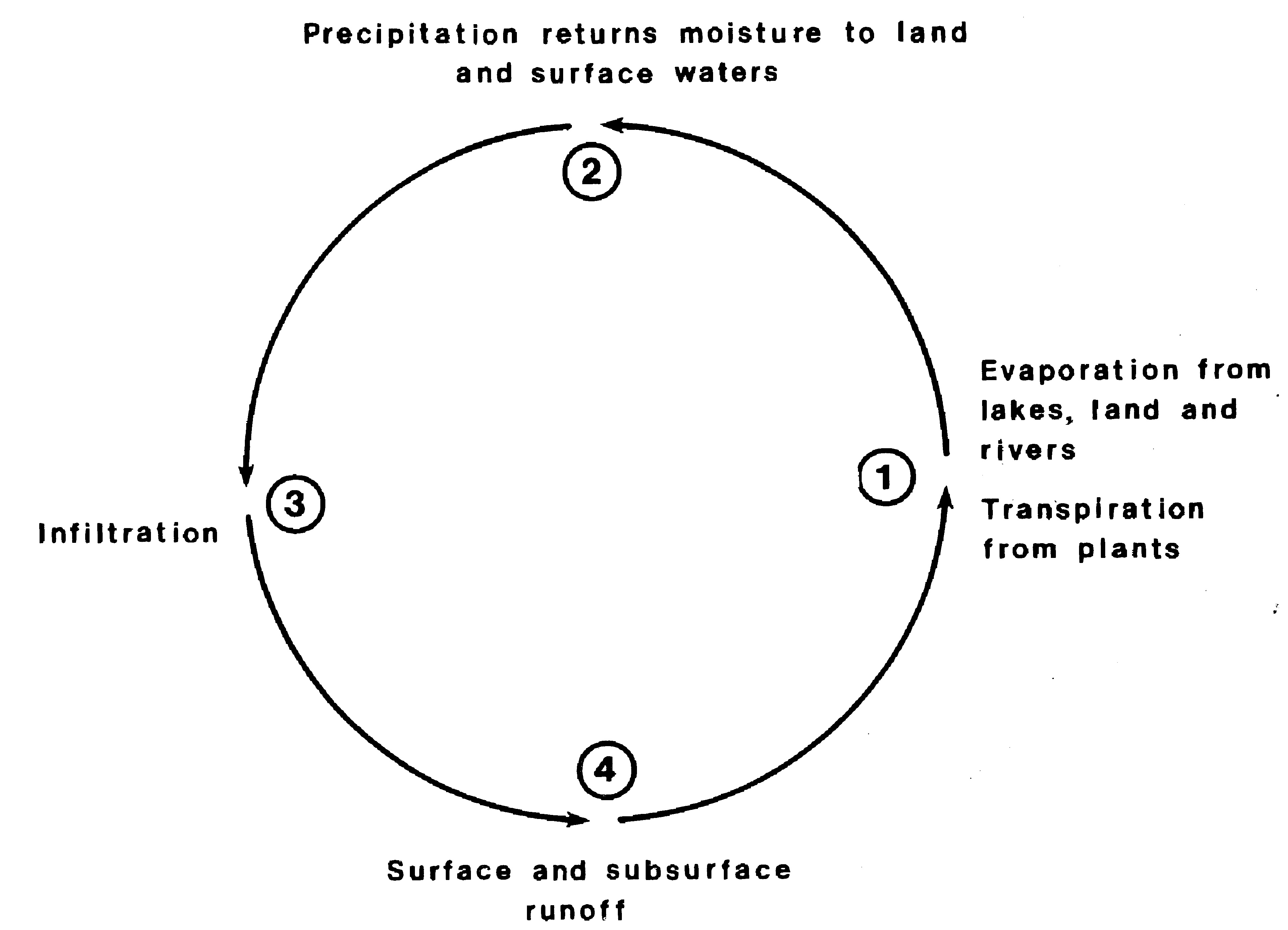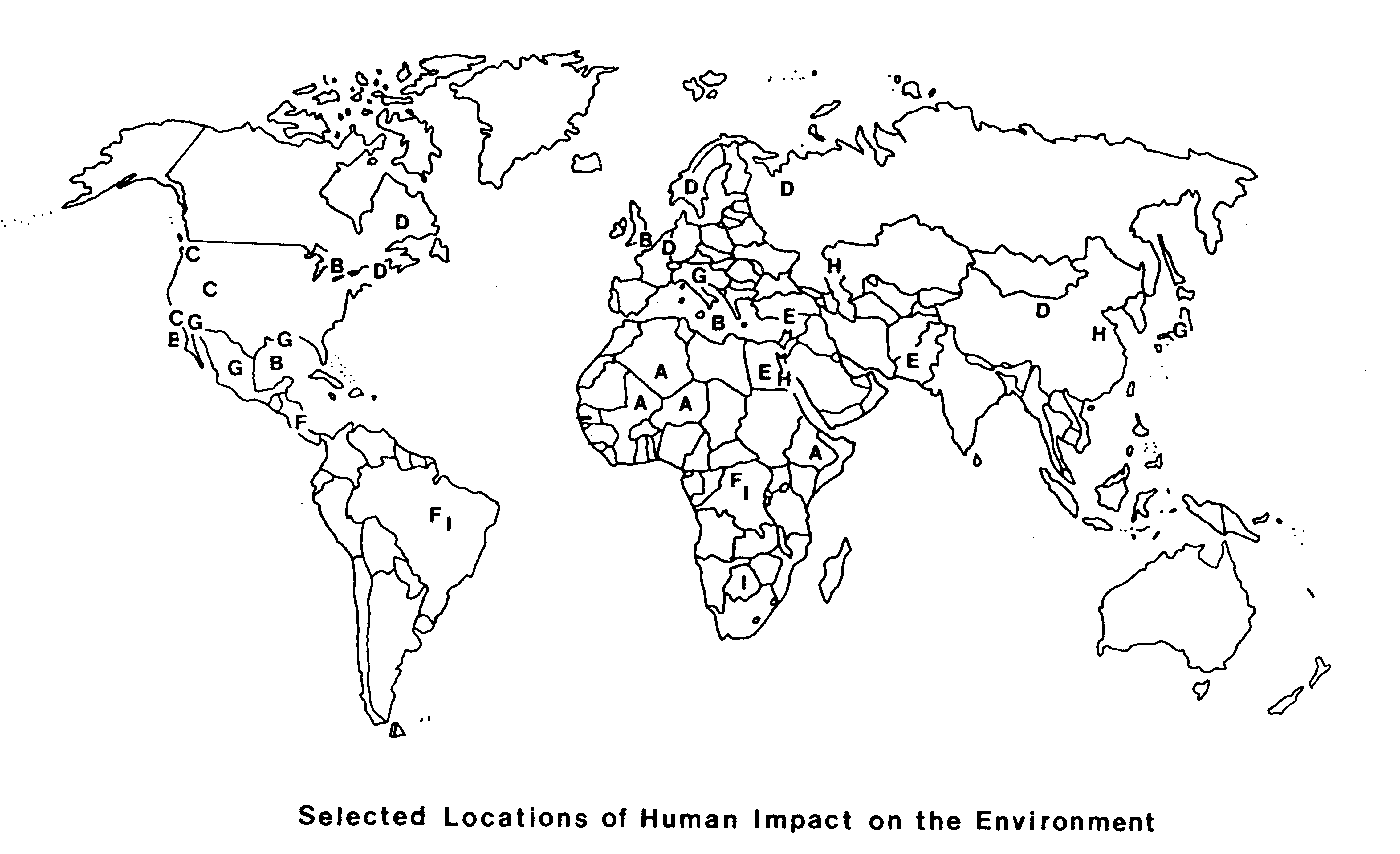 |  Introduction to Geography, 8/e Arthur Getis,
San Diego State University
Judith Getis
Jerome D. Fellmann,
University of Illinois, Urbana-Champaign
Human Impact on the Environment
ProblemsWeb Page Questions: Answer the following questions using the web pages listed in the chapter .
1.National Institute for the Environment - http://cnie.org/Human activities are responsible for __________________________________ of
the greenhouse gases, namely ____________________________________. Sources
of nitrous oxide are a byproduct of ___________________________________________________________________________________.
Methane has man made sources, but natural sources include_____________________________________________________.
2. The Canada Centre for Inland Waters - http://www.cciw.ca/
What is GEMS and what is the goal of this program?
__________________________________________________________________________________________
__________________________________________________________________________________________
__________________________________________________________________________________________
__________________________________________________________________________________________
Problems: 1. The Hydrologic Cycle circulates water through the biosphere. Although
the total supply of water within the earth's realm is constant, the amount of
usable water at any location varies. Human populations significantly affect
the quality of water and the speed of recirculation. The four major stages in
the cycle are indicated on the following diagram. At each of these points human
activity produces changes in both the quantity and quality of usable water.
From Figure 5.4 and the discussion in Chapter 5, identify the human activities
and associated modifications which affect the Hydrologic Cycle at each
major stage. Place your answers in the spaces provided at each stage.  <a onClick="window.open('/olcweb/cgi/pluginpop.cgi?it=gif::Hydrologic Cycle ::/sites/dl/free/0072367229/9465/Image05_01.gif','popWin', 'width=443,height=324,resizable,scrollbars');" href="#"><img valign="absmiddle" height="16" width="16" border="0" src="/olcweb/styles/shared/linkicons/image.gif">Hydrologic Cycle (58.0K)</a>Hydrologic Cycle <a onClick="window.open('/olcweb/cgi/pluginpop.cgi?it=gif::Hydrologic Cycle ::/sites/dl/free/0072367229/9465/Image05_01.gif','popWin', 'width=443,height=324,resizable,scrollbars');" href="#"><img valign="absmiddle" height="16" width="16" border="0" src="/olcweb/styles/shared/linkicons/image.gif">Hydrologic Cycle (58.0K)</a>Hydrologic Cycle - __________________________________________________________________________________________
__________________________________________________________________________________________
- __________________________________________________________________________________________
__________________________________________________________________________________________
- __________________________________________________________________________________________
__________________________________________________________________________________________
- __________________________________________________________________________________________
__________________________________________________________________________________________
2.
- Various human impacts on the natural environment are more acute
or pronounced at some locations on the earth's surface than at others. The following
outline map of the continents contains the letters A through I
at selected locations. Each location is subject to a particular environmental
impact associated with human occupance which are given in the list below. In
the space provided, indicate the letter that is represented by that phenomenon.
You will notice that some impacts are found at more than one place. (Note: All
answers can be found in Chapter 5).
- Acid Rain _____
- Animal and Plant Extinction _____
- Channelization _____
- Deforestation _____
- Desertification _____
- Ground Subsidence _____
- Photochemical Smog (Ozone Pollution) _____
- Salinization _____
- Sewage and Industrial Dumping _____
- Why are areas like northern Canada, Siberia, and Australia less affected
by human impact?
- Are any areas of the world really immune to human impact?
- Why or why not?
__________________________________________________________________________________________
__________________________________________________________________________________________  <a onClick="window.open('/olcweb/cgi/pluginpop.cgi?it=gif::Locations of Human Impact on the Environment::/sites/dl/free/0072367229/9465/Image05_02.gif','popWin', 'width=665,height=412,resizable,scrollbars');" href="#"><img valign="absmiddle" height="16" width="16" border="0" src="/olcweb/styles/shared/linkicons/image.gif">Locations of Human Impact on the Environment (130.0K)</a>Locations of Human Impact on the Environment <a onClick="window.open('/olcweb/cgi/pluginpop.cgi?it=gif::Locations of Human Impact on the Environment::/sites/dl/free/0072367229/9465/Image05_02.gif','popWin', 'width=665,height=412,resizable,scrollbars');" href="#"><img valign="absmiddle" height="16" width="16" border="0" src="/olcweb/styles/shared/linkicons/image.gif">Locations of Human Impact on the Environment (130.0K)</a>Locations of Human Impact on the EnvironmentCritical Thinking Questions - Read the box on the Aral Sea in this chapter. Should conditions be reversed
and ample amounts of clean water be allowed to flow into it once again, would
it revert to its condition of 100 years ago? Why or why not?
- The Everglades of Florida face a similar though not as toxic fate as the
Aral Sea. What has Congress proposed to do to protect this unique environment?
What problems will this plan encounter? Is it worth the effort and money?
- Your client wants to build a billion dollar resort on one of the barrier
islands off the coast of Virginia and wants a guarantee in writing that the
island selected will not change significantly in the next 75 years. Using
your knowledge of global processes and coastal environments, explain to your
client why you cannot guarantee the island's stability over time. Give at
least five reasons.
- It has been said that necessity is the mother of invention. How have humans
coped with hazardous natural conditions over time?
- Even with improvements in the forecasting of severe storms, volcanic eruptions,
flooding, and the other natural hazards, there has been an increase worldwide
in emergency declarations, disaster proclamations and last-minute mandatory
evacuations. With populations increasing in size in coastal areas, river valleys,
and mountain areas, should governments be reactive - that is, respond to natural
hazards after they have occurred, or proactive, that is, to systematically
move people out of harm's way by encouraging relocation in non-emergency situations?
Support your argument as if you had to appear before a Congressional or United
Nations hearing.
|
|



 2002 McGraw-Hill Higher Education
2002 McGraw-Hill Higher Education
